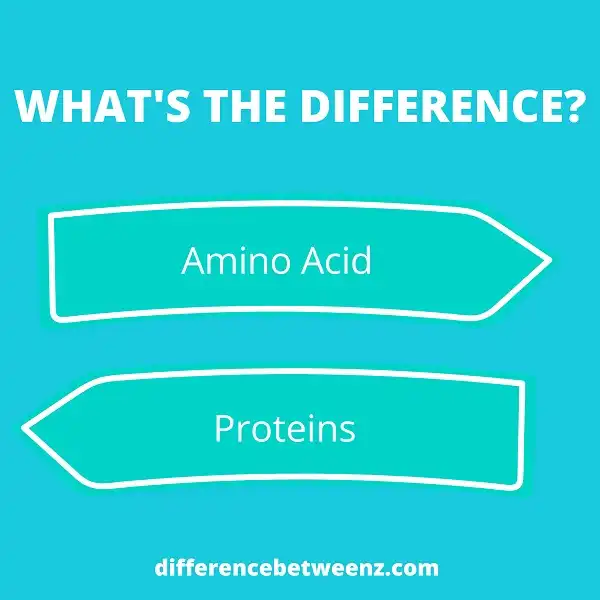Amino acids and proteins are two of the most important macromolecules in the body. They play a vital role in the body’s metabolic processes, including muscle contraction, energy production, and cell signaling. Despite their importance, many people don’t understand the difference between amino acids and proteins. This article will help to clear up any confusion and explain the key differences between these two molecules.
What is Amino Acid?
Amino acids are organic compounds that contain both a carboxylic acid group (-COOH) and an amino group (-NH2). Amino acids are the building blocks of proteins, and they can also be used as a source of energy by the body. There are 20 different amino acids that are found in proteins, and these can be divided into two groups: essential amino acids and non-essential amino acids. Essential amino acids cannot be produced by the body and must be obtained from the diet, while non-essential amino acids can be produced by the body from other nutrients. Amino acids are important for many different functions in the body, including muscle growth, repairing tissue damage, and producing hormones.
What are Proteins?
Proteins are complex molecules that play many vital roles in the body. They are involved in everything from muscle contraction and cell signaling to enzyme activity and metabolism. Proteins are made up of smaller units called amino acids, which are linked together in long chains. There are 20 different amino acids that can be used to make proteins, and the specific sequence of amino acids determines the structure and function of each protein. Proteins can be found in all cells and tissues, and they perform a wide variety of functions.
Proteins are essential for the structure and function of all cellular components, and they play a key role in many biochemical reactions. Proteins are constantly being synthesized and degraded, and their levels must be carefully regulated to maintain cellular homeostasis. Proteins play an important role in disease, and defects in protein structure or function can lead to disease. Proteins are also important therapeutic targets for drug development. Proteins are large, complex molecules that play a vital role in the structure and function of all living cells.
Difference between Amino Acid and Proteins
Amino acids are the building blocks of proteins. Proteins are made up of Amino acids. Amino acids are essential for the human body and come in two types: essential and non-essential. Non-essential amino acids can be made by the body, while essential amino acids can not. Foods that contain Amino Acids include meats, dairy, legumes, and grains. Proteins are needed for the growth and repair of tissues, enzymes, hormones, and other Body chemicals. They are also a significant part of the immune system. Amino acids and proteins are important for many bodily functions.
Conclusion
Amino acids are the building blocks of proteins, which play a vital role in human health. Proteins are made up of amino acids, and they perform many essential functions in the body. There are 20 different types of amino acids that can be found in protein molecules. Some of these amino acids are essential, meaning that the body cannot produce them on its own and must get them from food sources. The quality and composition of a protein molecule are determined by the types of amino acids it contains. Foods that contain high-quality proteins typically have all 20 essential amino acids.


